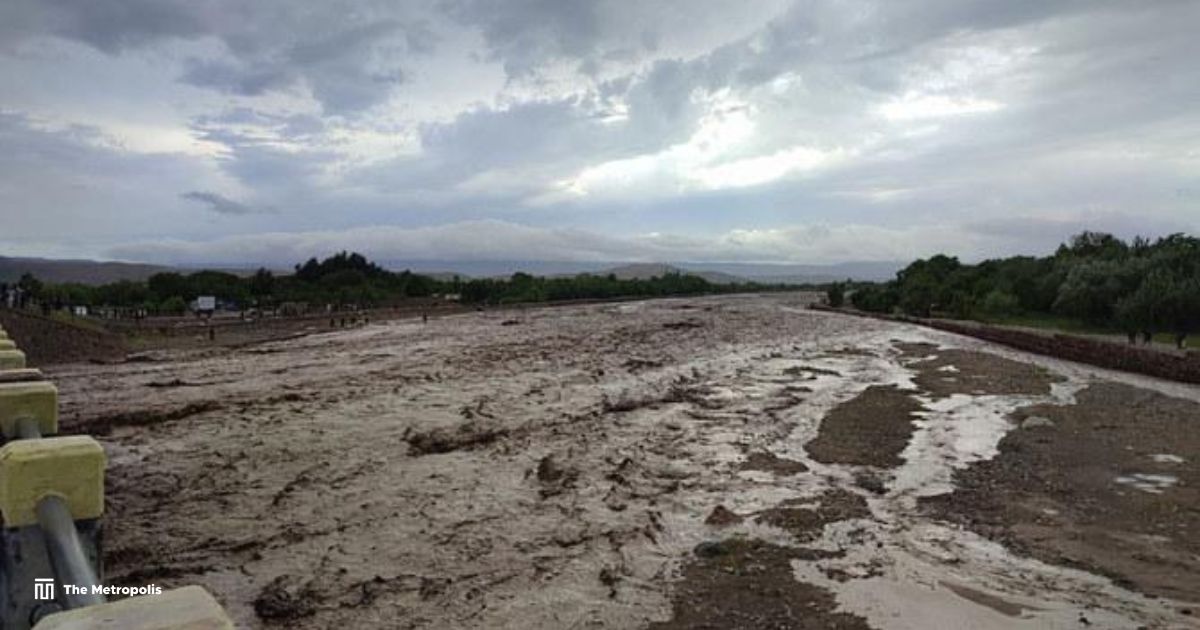Metropolis Desk-
At least 200 people were killed by flash floods caused by seasonal rains on Friday in the northern Afghan province of Baghlan, according to a UN report.
According to Edayatullah Hamdard, the provincial director of Natural Disaster Management in Baghlan, the floods also resulted in losses to homes and property in several districts. The death toll, he warned, was preliminary and “might rise as many people are missing.”
The Taliban spokesman for the State Ministry for Natural Disaster Management, Abdullah Janan Saiq, stated that the flash floods also affected Kabul, the nation’s capital. He reported that relief teams had been sent to the impacted areas with food and other supplies.
According to what Hamdard had earlier said, emergency workers were “searching for any possible victims under the mud and rubble, with the help of security forces from the national army and police.”
He said that families who lost their homes received dozens of tents, blankets, and food.
Huge muddy water torrents flooded roadways in the social media video clip, and bodies covered in black and white cloth were visible.
In one video clip, splintered wood pieces and house rubble can be seen in the floodwaters, and men can be heard sobbing as children wail.
Authorities in Afghanistan report that since mid-April, flash flooding and other floods have killed approximately 100 people in ten provinces, not sparing any area.
for any possible victims under the mud and rubble, with the help of security forces from the national army and police.”
He said that families who lost their homes received dozens of tents, blankets, and food.
Huge muddy water torrents flooded roadways in the social media video clip, and bodies covered in black and white cloth were visible.
In one video clip, splintered wood pieces and house rubble can be seen in the floodwaters, and men can be heard sobbing as children wail.
Authorities in Afghanistan report that since mid-April, flash flooding and other floods have killed approximately 100 people in ten provinces, not sparing any area.
A country where 80 percent of its 40 million+ citizens rely on agriculture for their subsistence has seen a glut of farmland.
Along with northeastern Badakhshan province, central Ghor province also suffered significant damage from Friday’s rains, according to officials.
Authorities would offer assistance to individuals affected by the flooding around the nation, according to Taliban government spokesperson Zabihullah Mujahid.
He announced X, formerly Twitter, saying that the government “expresses its deep sympathy with the families of dead and wounded, and instructs the ministry of natural disaster management, ministries of defense and interior, and provincial authorities to spare no resource in rescue efforts.”
According to what Hamdard had earlier said, emergency workers were “searching for any possible victims under the mud and rubble, with the help of security forces from the national army and police.”
He said that families who lost their homes received dozens of tents, blankets, and food.
Huge muddy water torrents flooded roadways in the social media video clip, and bodies covered in black and white cloth were visible.
In one video clip, splintered wood pieces and house rubble can be seen in the floodwaters, and men can be heard sobbing as children wail.
Authorities in Afghanistan report that since mid-April, flash flooding and other floods have killed approximately 100 people in ten provinces, not sparing any area.
The mountainous region of Badakhshan has seen “heavy financial losses in several areas… due to floods,” according to Mohammad Akram Akbari, the provincial director of natural disaster management.
He went on to say that there were fears of casualties in the Tishkan neighborhood, where water had cut off access to an area home to about 20,000 people by blocking a road.
Afghanistan is extremely vulnerable to climate change because of its unusually dry winter, which makes it harder for the soil to absorb rainfall.
At least 70 individuals lost their lives throughout the nation as a result of flash flooding and strong rains in April. Last month, around 2,000 houses, three mosques, and four schools sustained damage. There are thousands of people in need of humanitarian aid. According to Saiq, 2,500 animals perished in the deluges and the flooding also harmed agricultural land.
The country is among the poorest in the world and, scientists claim, among the least equipped to deal with the effects of climate change due to the devastation caused by four decades of conflict.
Afghanistan comes in sixth place among the nations most vulnerable to climate change, according to experts, despite contributing only 0.06 percent of global greenhouse gas emissions.
According to the World Bank, half of Afghans are living below the poverty line, and 15 million of them are food insecure.
Source- AFP



